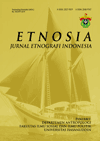Abstract
This article aims to review the book with the title of Black Mecca: The African Muslims of Harlem by Zain Abdullah. Abdullah’s (2010) Mec Black Mecca ’adds to the growing body of literature on Islam influenced by the post-modernists' challenges to neo-Orientalist Western representations of Islam (Al Azmeh 1993: 140). They are called for a historicized and contextualized view of Islam and Muslims, steering away from essentializing identity politics. Abdullah's (2010) thick ethnography, or as he describes it, "narrative style," presents a variety of anecdotes and experiences along gendered, class, and generational lines, with a common Muslim orientation towards environment and experiences.References
Abdullah, Z. (2010). Black Mecca: The African Muslims of Harlem. Oxford: Oxford University Press.
Al-Aziz, A. (1993). Islams and Modernities. London: Verso.
Asad, T. (2009). The Idea of an Anthropology of Islam. Qui Parle Vol 17 (2): 1-30.
Ebin, V. (1996). Making Room Versus Creating Space: The Construction of Spatial Categories by Itinerant Mouride Traders. In Metcalf, Barbara eds., Making Muslim Space in North America and Europe. Berkley: University of California Press. 92-110.
McMichael, C. (2002). ‘Everywhere is Allah’s Place:’ Islam and the Everyday Life of Somali Women in Australia. Journal of Refugee Studies Vol 15 (2): 171-188.
Stiles, E. (2011). Black Mecca: The African Muslims of Harlem. American Anthropologist Vol 113 (3): 511-512.
Varisco, D. (2005). Islam Obscured: The Rhetoric of Anthropological Representation. New York: Palgrave Macmillan.





